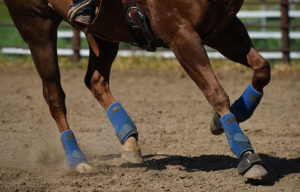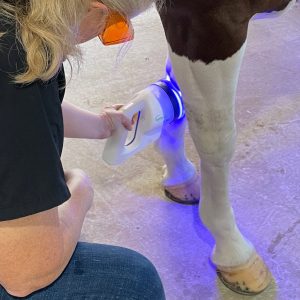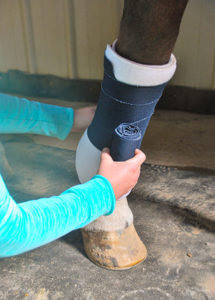Scintigraphy: Get It While It’s Hot
It is not difficult for a practitioner to diagnose a complete displaced bone fracture in a horse. The animal normally will be lame, and there will be swelling. Radiographs will pinpoint the injury and its severity. However, it is not so easy when dealing with a nondisplaced stress fracture.
"Stress fractures," says M.J. Martinelli, DVM, PhD, Dipl. ACVS, of the University of Illinois, "are disruptions to the cortical bone microscopically without concomitant loss of the supporting architecture. If the bone is allowed to rest, the crack should heal uneventfully, and the bone should regain its normal physiological strength.
"In some cases, however, the bone may fail completely, and a displaced fracture results, often with disastrous consequences to the horse."
The disastrous consequence often is a catastrophic injury that can result in euthanasia of the injured animal. Researchers and practitioners agree that in many cases, the fracture could have been prevented if it had been known that a stress fracture or other damage existed. Removing the horse from training and competition and allowing the bone to rest and strengthen would have been all the therapy required in many cases
Create a free account with TheHorse.com to view this content.
TheHorse.com is home to thousands of free articles about horse health care. In order to access some of our exclusive free content, you must be signed into TheHorse.com.
Start your free account today!
Already have an account?
and continue reading.

Written by:
Les Sellnow
Related Articles
Stay on top of the most recent Horse Health news with















